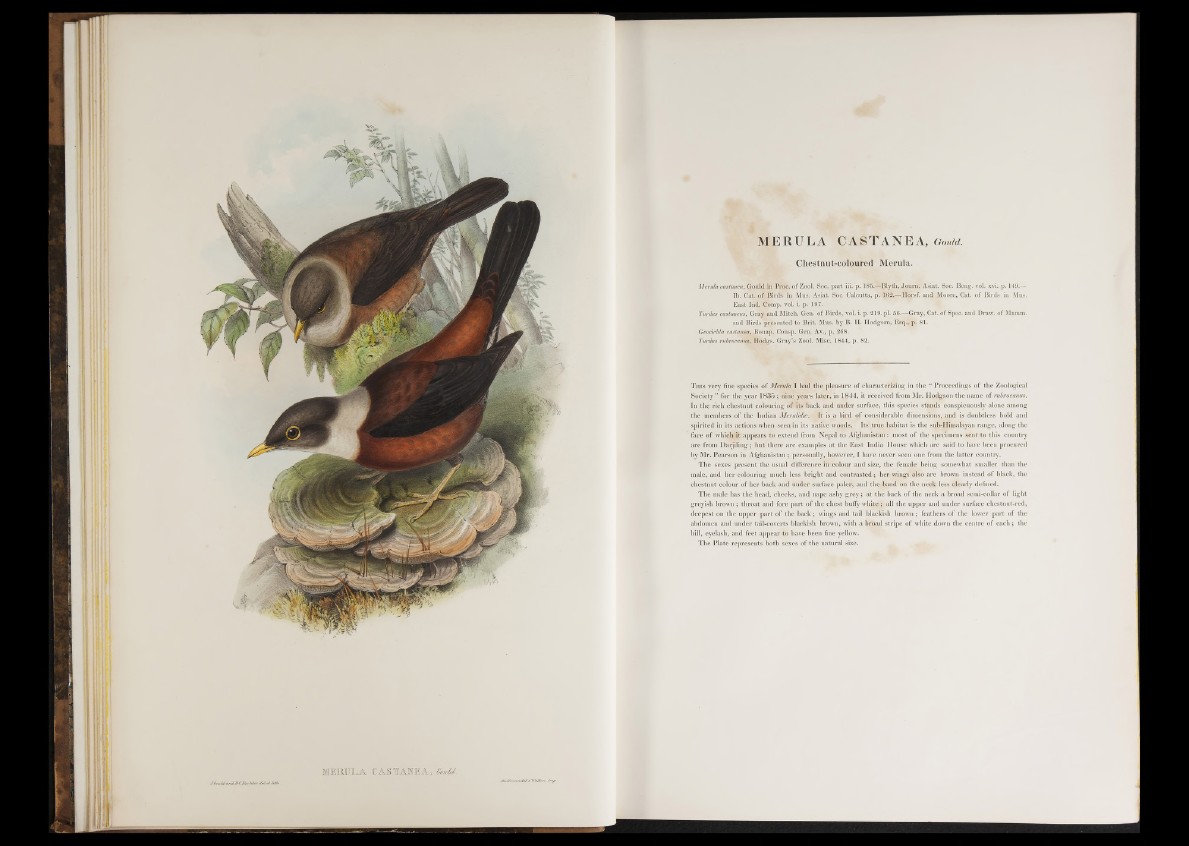
MERITILA CAS TAKE A, ScuW,
widJI CJUchUr; tM.ti liifo.
MERULA CASTANEA, I B
Chestnut-coloured Merula.
Menila castanea, Gould in Prop, of Zool. Soc, part iii. p. 185.—Blytli, Journ. Asiat. Soc. Beng. vol. xvi. p. 149.—
Ib. Cat. of Birds in Mus. Asiat. Soc. Calcutta, p. 162.— Horsf. and Moore, Cat. of Birds in Mus.
East Ind. Comp. vol. i. p. 197.
Turdus castaneus, Gray*and Mitch. Gen. of Birds, vol. i. p. 219. pi. 56.— Gray, Cat. o f Spec, and Draw, of Mamm.
and Birds presented to Brit. Mus. by B. H. Hodgson, Esq., p; 81.
Geocichla castanea, Bonap. Consp. Gen. Av., p. 268.
Turdus riibrocamis:,, Ifctdgs. Gray’s Zool. Misc. 1844, p. 82.
T h is very fine species o f Merula I had the pleasure o f characterizing in the “ Proceedings o f the Zoological
Society ” for the year 1835 ; nine years later, in 1.844, it received from Mr. Hodgson the name o f rubrocanus.
In the rich chestnut colouring o f its back and under surface, this species stands conspicuously alone among
the members o f the Indian Merulidce. It is a bird o f considerable dimensions, and is doubtless bold and
spirited in its actions when seen in its native woods. Its' true habitat is the sub-Himalayan range, along the
face o f whichiS? appears to extend from Nepal to Afghanistan: most o f the specimens sent t o this country
are from Darjiling; but there are examples at the East India House which are said to have been procured
by Mr. Pearson in Afghanistan ; personally, however, I have never seen one from the latter country.
The sexes present the usual difference in colour and size, the female being somewhat smaller than the
male, and her colouring much less bright and contrasted; her wings also are brown instead o f black, the
chestnut colour o f her back and under surface paler, and the band on the neck less clearly defined.
The male has the head, cheeks, and nape ashy g r e y ; at the back o f the neck a broad semi-collar o f light
greyish brown ; throat and fore part o f the chest buffy white; ; all the upper and under surface chestnut-red,
deepest on the upper part o f the back; wings and tail blackish brown; feathers o f the lower part o f the
abdomen and under tail-coverts blackish brown, with a broad stripe o f white down the centre o f ea ch ; the
bill, eyelash, and feet appear to have been fine yellow.
The Plate represents both sexes o f the natural size.